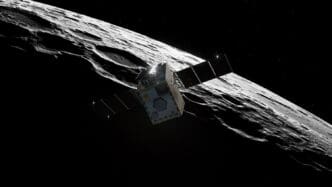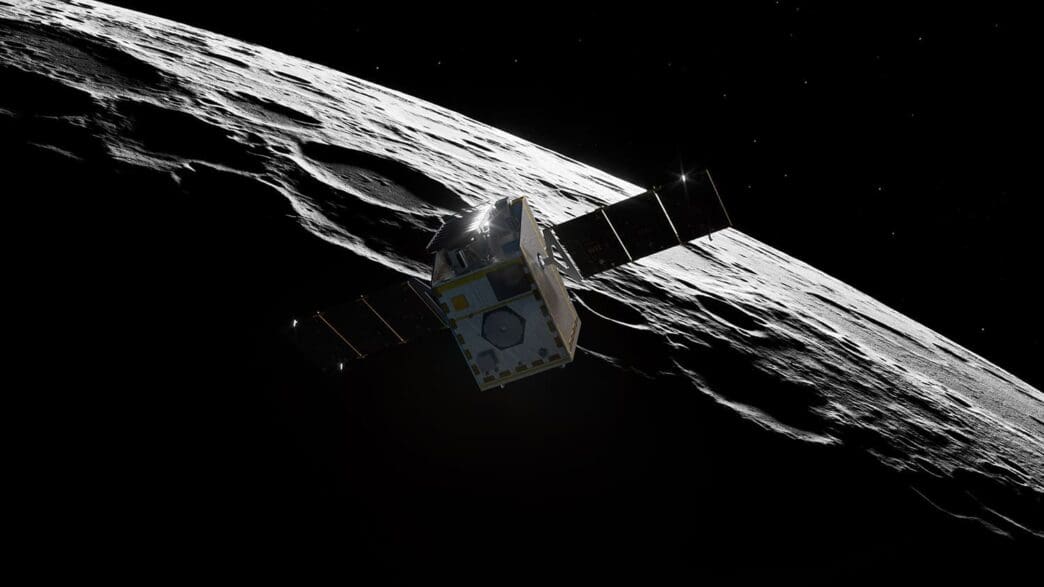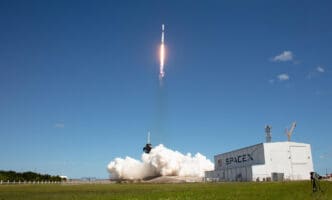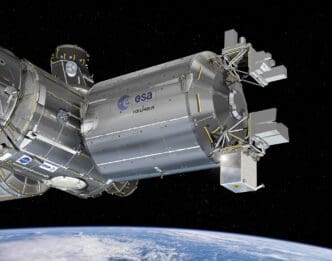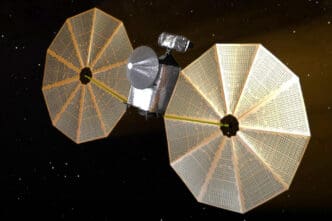Get ready to witness an astounding journey to the Moon! The Lunar Trailblazer, a pioneering satellite, sets the stage for a remarkable expedition with its unique approach to lunar orbit. This voyage isn’t just about reaching the Moon; it’s about doing so with finesse and minimal fuel! Let’s explore how this small satellite is taking cosmic navigation to a new level.
The Lunar Trailblazer is gearing up for a one-of-a-kind mission to map the Moon’s water. More than just a ride through space, this mission combines the gravitational forces of celestial bodies with human ingenuity to smoothly navigate to the Moon. Buckle up as we delve into the intricate details of this awe-inspiring mission and its groundbreaking potential.
The Art of Intricate Navigation
Navigating through the vast expanse of space is no small feat, yet the Lunar Trailblazer is designed to do just that. Equipped with advanced navigation techniques, it will perform a series of flybys and orbital loops. These carefully planned maneuvers ensure that the satellite achieves the optimal path for mapping the Moon, all while conserving fuel. This mission is a testament to the clever use of celestial mechanics.
Weighing in at just 440 pounds and stretching 11.5 feet wide with its solar panels extended, the Lunar Trailblazer is compact yet mighty. With a small engine, the mission’s design employs a low-energy transfer trajectory, using the gravitational pull of the Sun, Earth, and Moon. Gregory Lantoine, the mission’s navigation lead, emphasizes, “It’s the most fuel-efficient way to get to where we need to go.”
Touching Down on the Moon
Once it arrives, the Lunar Trailblazer will undertake 12 orbits a day, mapping the lunar surface at various times. This allows for detailed observations of different areas, including the Moon’s South Pole craters. These regions, often cloaked in shadows, could reveal reserves of lunar ice—a potential resource for future explorers.
The data gathered by the Lunar Trailblazer will be crucial. It holds the potential to identify significant quantities of ice in these craters. The mission’s findings will be transmitted back to Earth via NASA’s Deep Space Network, creating a wealth of knowledge for both current missions and those yet to come.
Delving Into Lunar Science
The Lunar Trailblazer carries two essential instruments: the High-resolution Volatiles and Minerals Moon Mapper (HVM3) and the Lunar Thermal Mapper (LTM). These tools are pivotal in creating accurate maps of the lunar surface.
The instruments on board are a collaborative effort. HVM3, provided by NASA’s Jet Propulsion Laboratory, and LTM, developed by the University of Oxford, form the scientific backbone of the mission. This combination enhances the satellite’s ability to detect water on the Moon in unprecedented detail.
With its high-risk, high-reward approach, the Lunar Trailblazer aims to set new standards in lunar research. As a SIMPLEx mission, it embraces risk to achieve significant scientific gains, paving the way for innovative exploration techniques.
Educational Opportunities En Route
Beyond its scientific goals, the Lunar Trailblazer mission offers educational experiences. Students from Caltech and Pasadena City College are part of the team, gaining hands-on experience in mission operations.
Involvement in such a groundbreaking mission provides students with opportunities to contribute to real-world space exploration projects. From software development to communications, these students are integral to the mission’s success.
Lee Bennett, the operations lead, highlights, “Our team is a diverse group, including seasoned engineers and students, all contributing to this incredible project.”
Understanding Lunar Trailblazer’s Leadership
JPL manages the overall design and engineering, while Lockheed Martin ensures the spacecraft’s integrity and supports operational needs.
The involvement of multiple prestigious institutions underscores the mission’s collaborative spirit and commitment to furthering lunar exploration.
The Trailblazer’s Support System
NASA’s Planetary Mission Program Office at Marshall Space Flight Center manages the mission, ensuring that it meets its objectives efficiently and safely.
Looking Towards the Future
With its compact design and cutting-edge instruments, the Lunar Trailblazer represents a leap forward in space exploration technology.
The mission’s success could influence future exploration, making it a trailblazer not just in name but in essence.
As this small satellite embarks on its mission, it symbolizes the blend of innovation and ambition driving modern space exploration.
The Lunar Trailblazer’s journey is not only a testament to technological prowess but also an inspiring story of collaboration and discovery. With every loop and maneuver, it brings us a step closer to unraveling the Moon’s mysteries.

